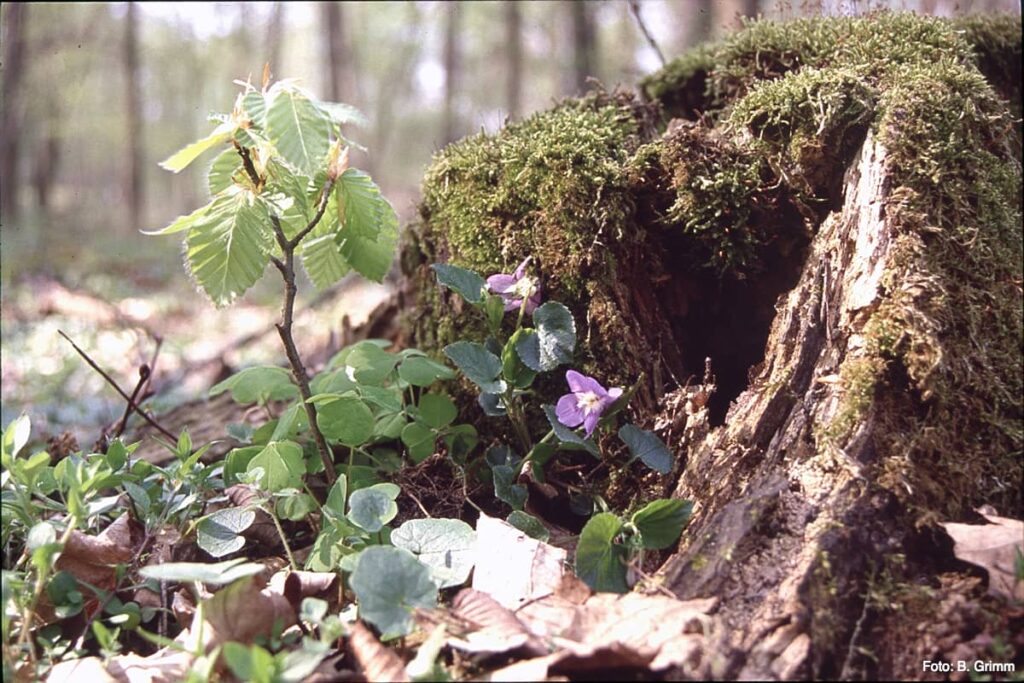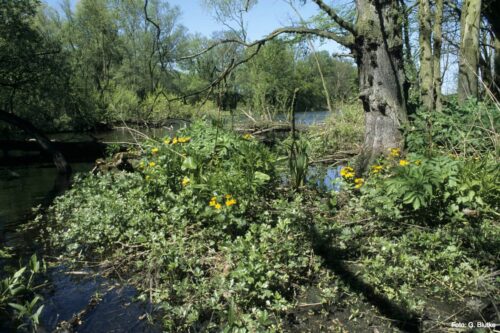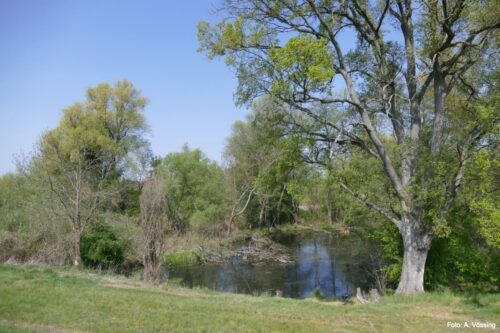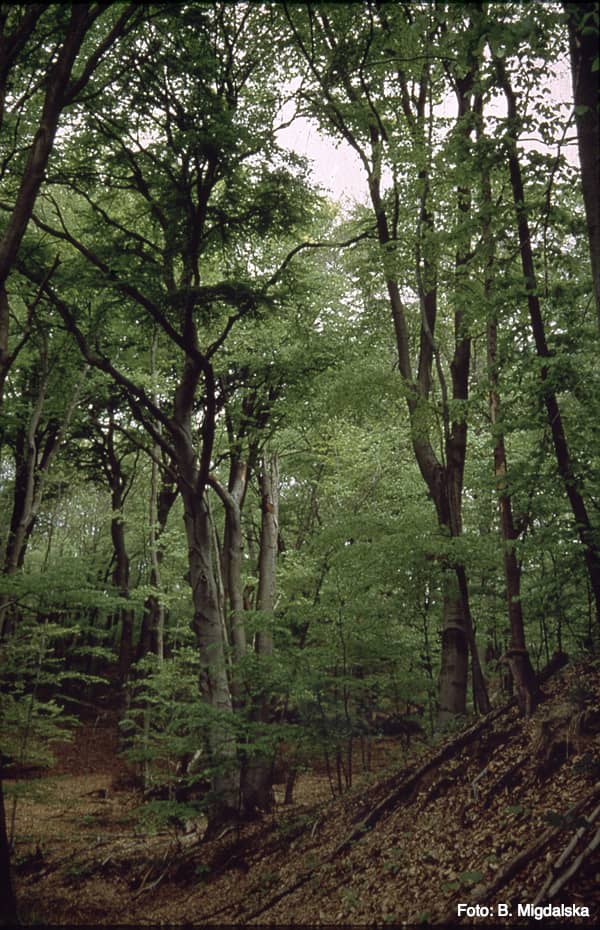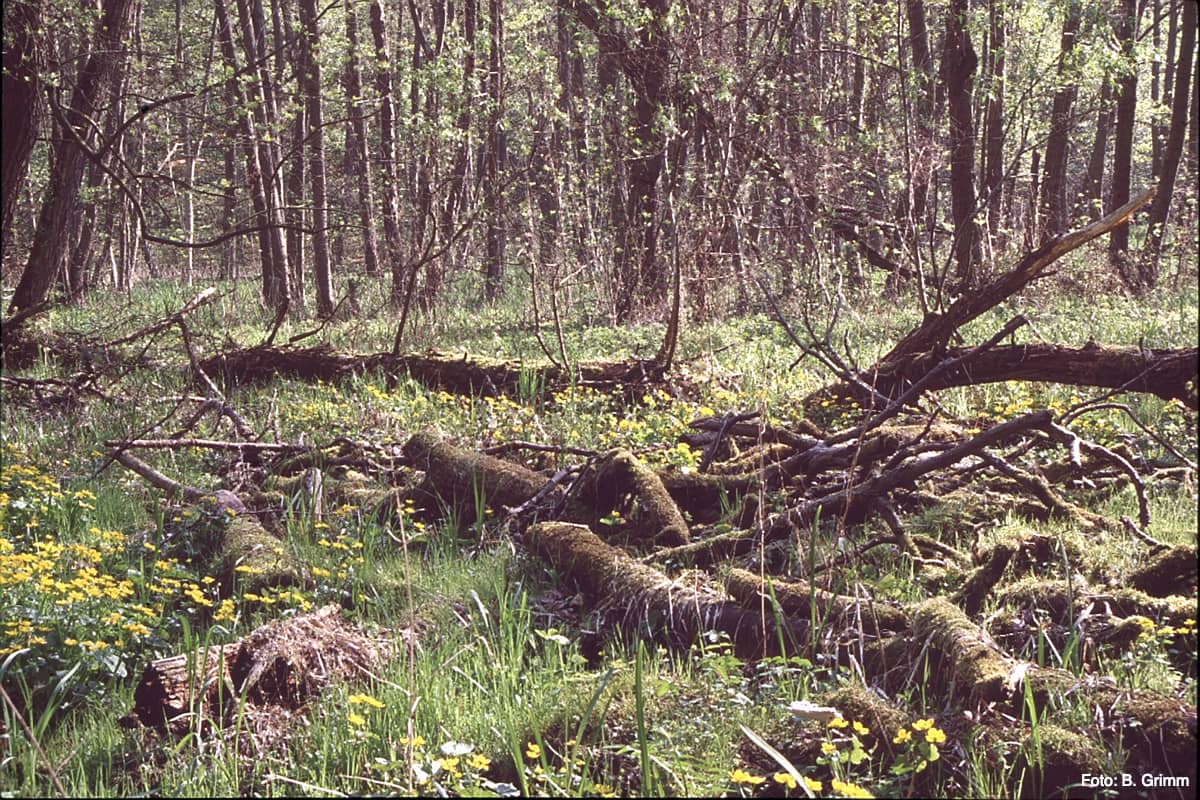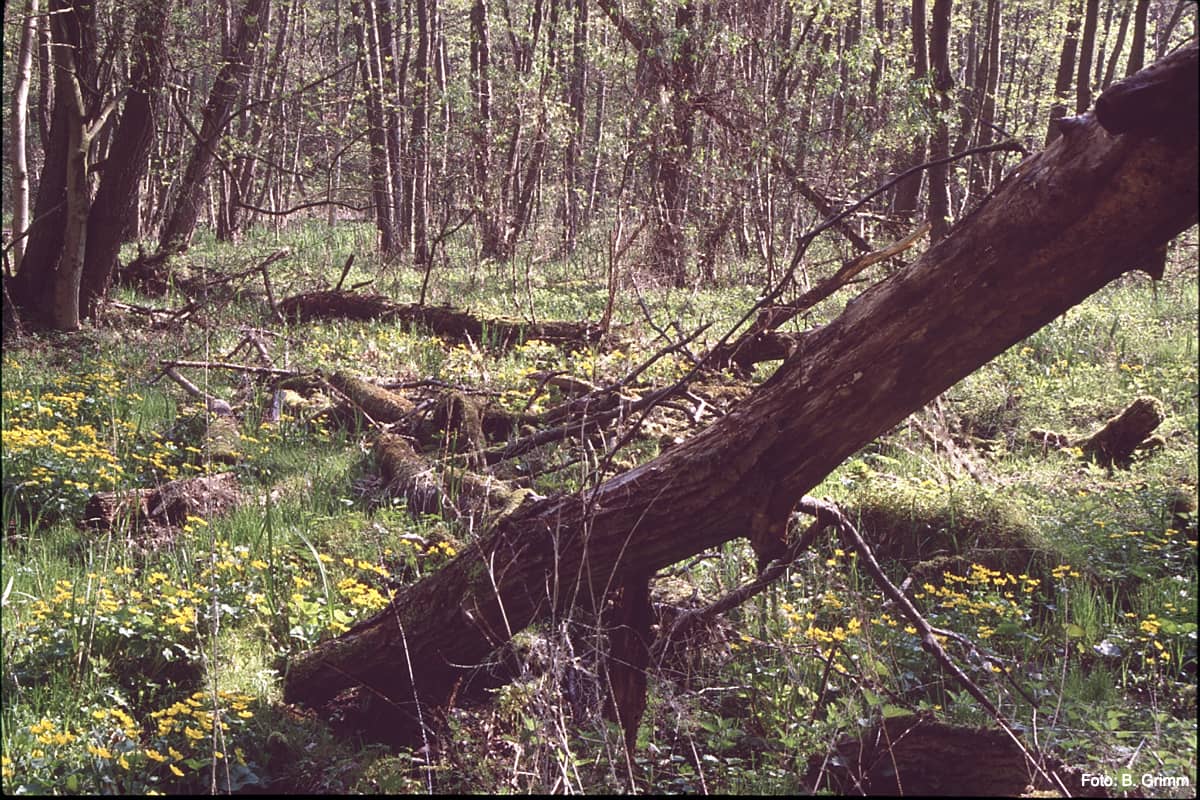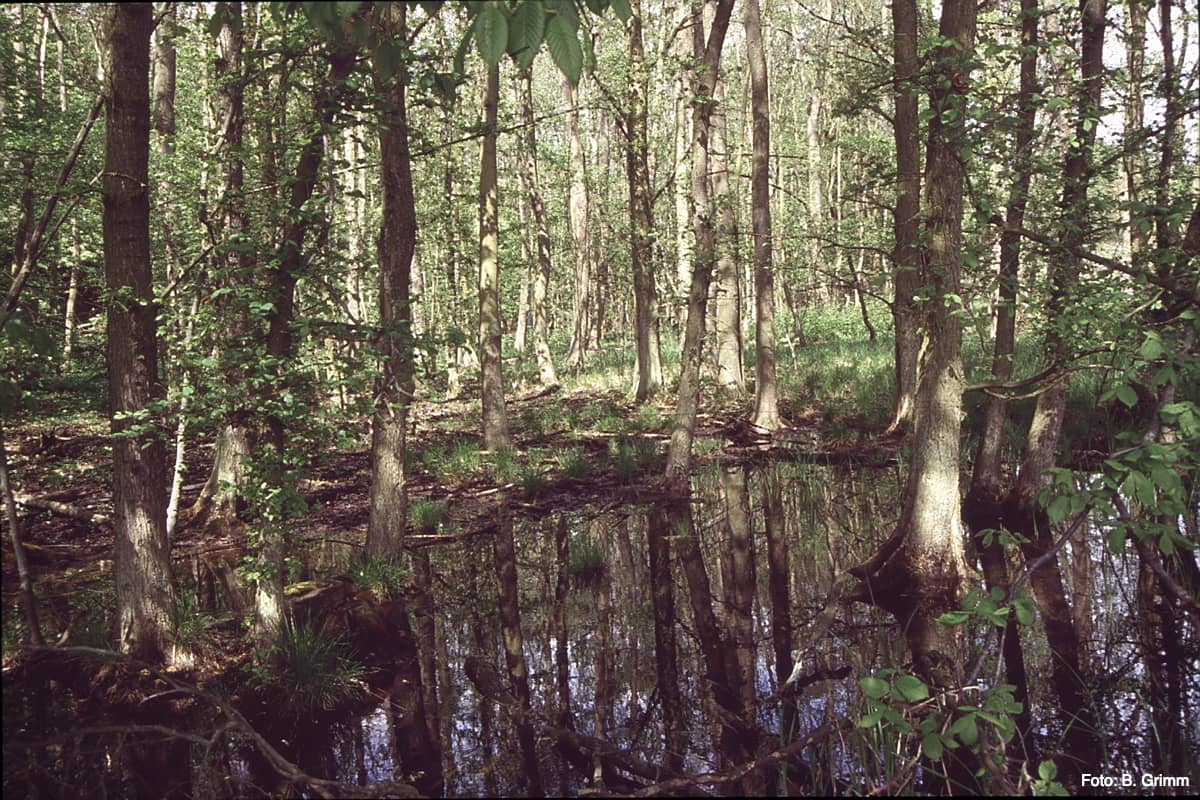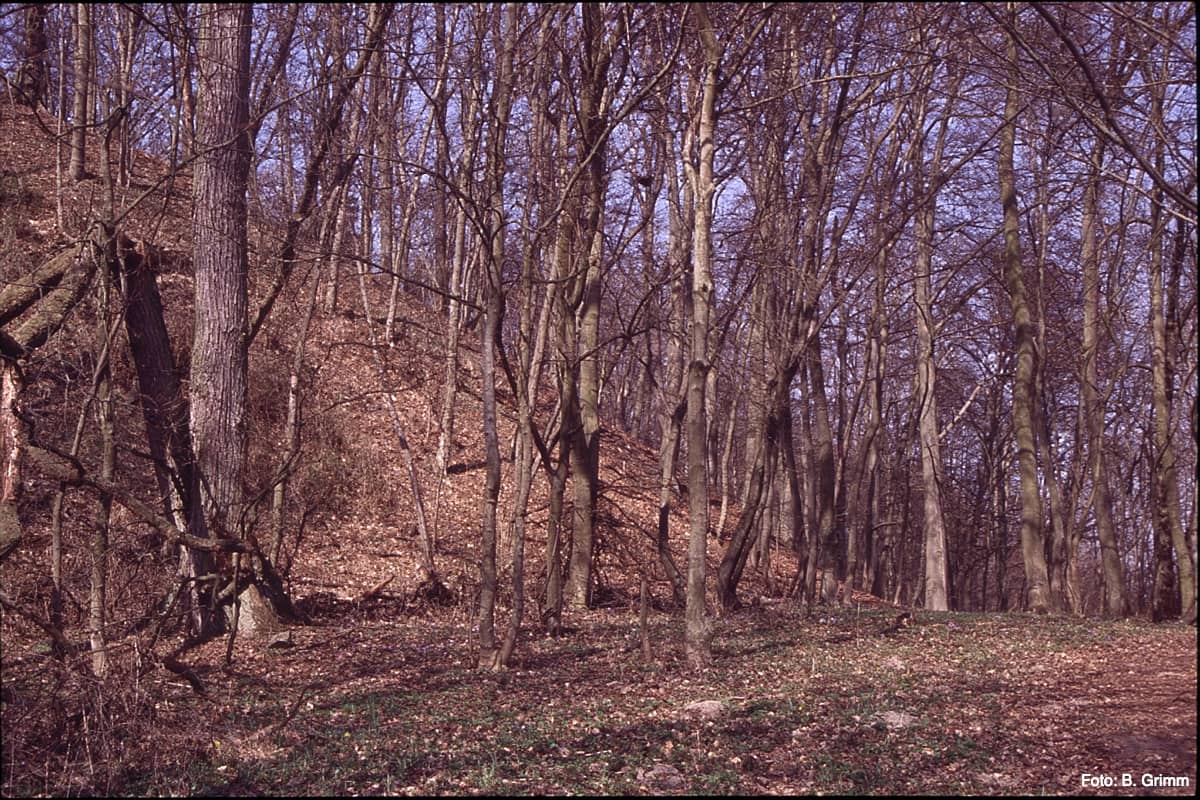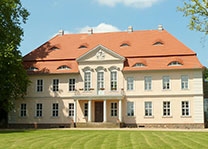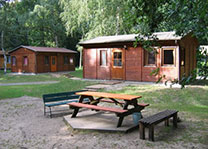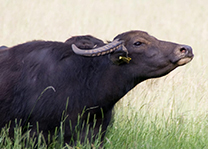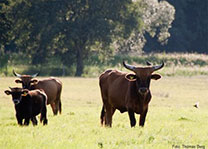Forest only plays a subordinate role in terms of area in the Lower Oder Valley National Park. In addition to the remains of hardwood and softwood alluvial forest in the polder area, there are some remarkable hillside forests on the slopes of the Oder Valley, i.e. on the old lateral moraines of the Oder glacial valley. Since they are difficult to use for forestry due to their steep hillside location and are difficult to reach, they are in a near-natural state and were largely incorporated into protection zone I (total reserve) when the national park was founded (1995).
This means that the forestry has been stopped here and the trees are growing, but can also fall and stay where they want. This is where real wilderness develops and wilderness can be dangerous. We strongly advise against hiking in these forests in the event of a storm.
Hunting is also stopped in these wilderness areas. Excess hoofed game populations (wild boar, roe deer, deer) are only skimmed off in the hillside forests on one or two driven hunts per year in order to avoid game damage on the surrounding fields, but also to enable browsing damage in the forest and thus natural regeneration. We don’t call that hunt, but wildlife regulation. This is necessary until the naturally occurring predators such as wolf (Canis lupus), Lynx (Lynx lynx) and bear (Ursus arctos) have become at home again and can take on their role in the ecosystem. Only then can the hunt be stopped. The wolf is already there, decimating above all the roe deer, mainly the old and sick, but also the beaver or small carnivores such as the fox, which, if it prevails indefinitely, endangers the already thin meadow breeding population in the Oder floodplain. So we hope to achieve a relative ecological balance in the forest in this way, if possible without human intervention.
- Natural regeneration in the Lower Oder Valley National Park
But the natural deciduous forest is already worth seeing. Hikers can, for example, hike from Lunow to Criewen on many good hiking trails through the unspoilt hillside forests, but better not when there is wind or storm.
Riparian forests
- Riparian forest in spring
- Alluvial forest near Criewen
As old maps show, alluvial forests were extensive in the Middle Ages and covered over two thirds of the area of the Oder valley. Due to the agricultural use, the alluvial forest was pushed back further and further. The emergence of new trees was prevented by mowing and tread damage, by browsing by wild animals and grazing animals, but also by the lack of flooding dynamics of the no longer freely flowing river in the polder area. Such flooding would be necessary in order to open up the dense vegetation cover and to give the alluvial or blown tree seeds good opportunities for germination on the erosion areas.
Of the Hardwood alluvial forest is a forest dominated by oaks and elms on a moist location in the floodplain, which can cope well with the regular winter floods. In the lower Oder valley, the hardwood alluvial forest consists mainly of the white elm (Ulmus laevis) and the English oak (Quercus robur) together. A larger remaining occurrence of the hardwood alluvial forest can be found around the Welsesee.
Floods in summer, during the growing season, are relatively difficult to cope with in hardwood alluvial forests. The effects of the extreme summer floods of 1997 can be seen well on the Welsesee. Numerous elms and oaks died there in 1997, the dead trunks of which still soar into the sky. But this is a natural process, which in turn opens up new living spaces for other living beings.
Also the Softwood alluvial forest can only be found in a few places in the lower Oder valley, for example as the white willow-black poplar alluvial forest at Crieort, in the Vordeich area near Criewen, Lunow or on the old Oder. Softwood alluvial forest is made up of various types of willow and poplar, of which above all
- White willow (Salix alba)
- Purple willow (Salix purpurea)
- Quaking aspen (Populus tremula)
- White poplar (Populus alba)
- Black poplar (Populus nigra)
are to be mentioned. The native black poplar is strongly threatened and is experiencing a new, scientifically supported distribution in its own funding project.
It is planned to increase the proportion of the alluvial forest again as part of nature conservation management. According to the maintenance and development plan, the initialisation of the alluvial forest is planned on up to 1,000 hectares. This is to be achieved, among other things, by initial plantings that open the otherwise dense herbaceous layer and, after a few years of protective care, produce a self-reproducing riparian forest. Land users are also required to effectively isolate trees and waterways in order to facilitate the natural regeneration of the alluvial forest.
Hillside forests
On the slopes of the Oder valley there are wet forests in the valleys and spring gorges, that of the ash (Fraxinus exelsior) are dominated and can be found in a very good distribution. This damp ash forest deserves special attention and is relatively rare in Germany.
There are beautiful hillside forests in the Lunower Hölzchen, in the Gellmersdorfer Forst, in the southern part of the Peterberge and in the north between Gartz and Mescherin.
In the hillside forests, the beech trees naturally dominate, as they can still be found in the Gellmersdorfer Forest today. A grove beech forest can be found on superficially sanded soils, in which a number of acid indicators, e.g. the Schlängel-Schmiele (Deschampsia flexuosa), the thorny worm fern (Dryopteris carthusiana) or the pill-sedge (Carex pilulifera) occur regularly. On lime-rich soils, for example boulder clay, a sedge-beech forest is very rarely found in the area, through the mountain sedge (Carex montana) and a number of orchids (e.g. Cephalanthera damasonium) is marked.
Mainly, however, woodruff and barley beech forests can be found in the lower Oder valley. For them, the golden dead nettle is in the soil layer (Lamium galeobdolon) who have favourited Spiked Devil’s Claw (Phyteuma spicatum), the woodruff (Galium odoratum), the single-flowered pearl grass (Melica uniflora), the Christopher herb (Actaea spicata), the liverwort (Hepatica nobilis) or, more rarely, the Turk’s cap lily (Lilium martagon) distinctive species.
Many of these locations are now populated by hornbeams, sessile oaks, English oaks or winter linden trees and also make a natural impression. However, these hornbeam forest communities are likely to be an anthropogenic “artifact” on the Oder, i.e. the result of ongoing low or medium-sized forest operations. According to the latest findings, today’s oak and hornbeam forests in the hill country and the slopes of the Oder valley are anthropogenic. The location factors correspond to those of the beech forests. But where the vigorous and shade-tolerant beech can thrive, it displaces the other, inferior tree species. In some typical oak-hornbeam forests, for example in Lunower Hölzchen, young beech forests begin to grow and initiate natural development. Up until now, experts were convinced that the beech could not thrive in most of these locations and that these areas were reserved for oaks and hornbeams.
The elm hillside forests on the steep slopes of the glacial areas to the Oder Valley are a special rarity among the forest communities in the National Park. All three types of elm determine the tree layer: white elm (Ulmus laevis), Field elm (Ulmus minor), Mountain elm (Ulmus glabra). A rich flora complements the picture. Here are the dwarf larkspurs (Corydalis pumila) and the scattered forget-me-not (Myosotis sparsiflora) distinctive species.
- Hillside forest near Bellinchen



